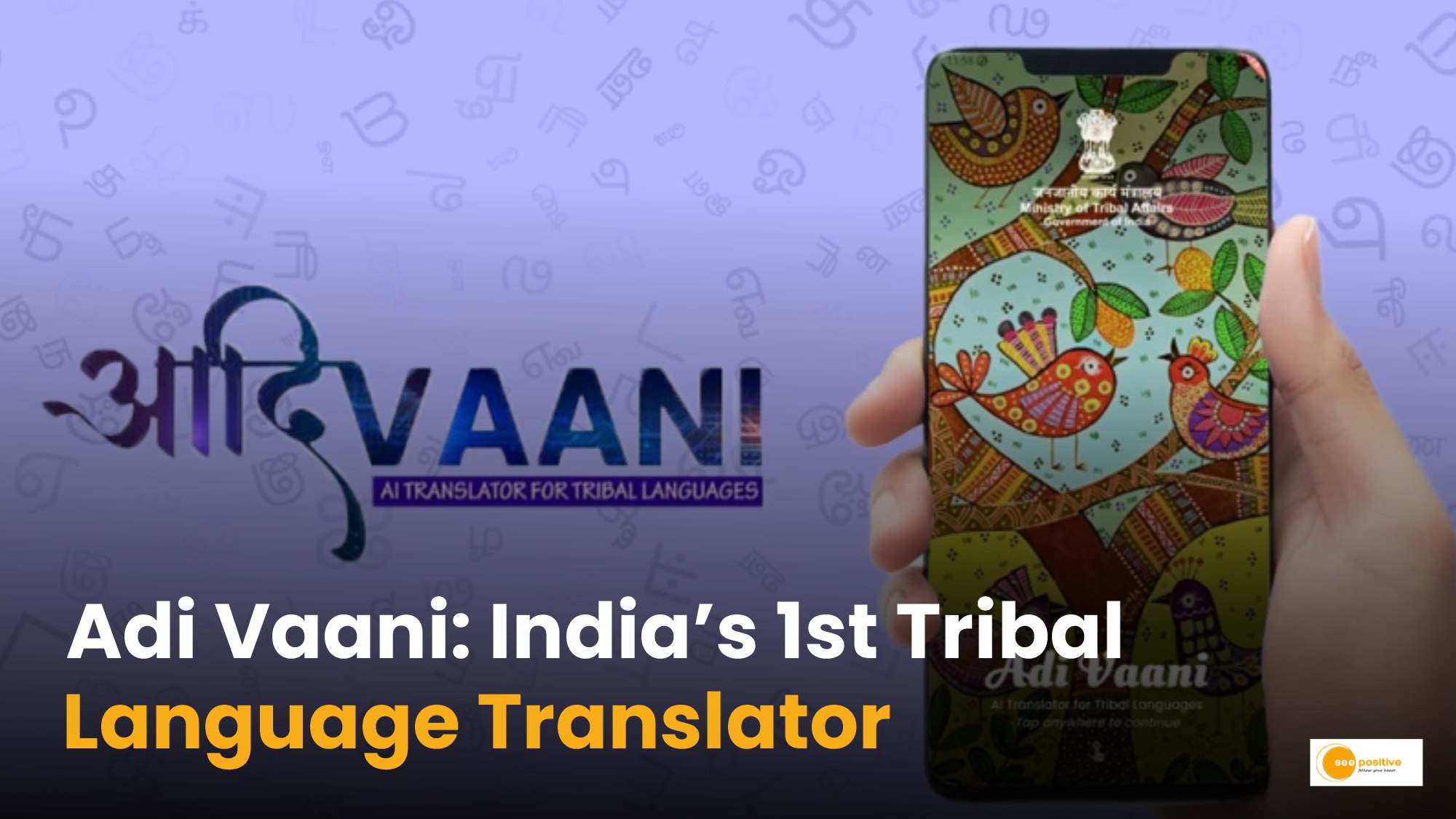Adi Vaani, India’s 1st Tribal Language Translator. India is home to one of the richest linguistic heritages in the world. There are hundreds of tribal languages spoken across its length and breadth. However, many of these languages face the threat of extinction. This is due to lack of documentation, limited accessibility, and declining usage among younger generations. In a groundbreaking step towards preserving this intangible cultural heritage, the Government of India recently launched Adi Vaani. Adi Vaani is country’s first AI-powered translation platform for tribal languages.
What is Adi Vaani?
Adi Vaani is a pioneering digital initiative developed under the Ministry of Tribal Affairs. It is designed to translate, preserve, and promote India’s tribal languages using the power of artificial intelligence. The platform uses advanced AI models to translate between tribal languages and mainstream Indian languages such as Hindi and English. It supports both text and speech translation, making it a versatile tool for communication, education, governance, and cultural preservation.
Currently in its beta phase, Adi Vaani already supports multiple tribal languages including Santali, Bhili, Gondi, and Mundari—with more being added in future updates.
Key Features
- Real-Time Translation
Users can translate words, phrases, or even longer texts between tribal languages and Hindi/English. This feature is especially useful in educational settings, government communication, and public services. - Text-to-Speech (TTS)
The platform incorporates TTS capabilities for certain tribal languages, allowing users to hear correct pronunciations—an essential step in language learning and oral preservation. - Digitization and Archiving
Adi Vaani helps in digitizing tribal manuscripts, folk tales, and oral traditions by using AI-based optical character recognition (OCR) and audio transcription. - Educational Integration
The tool is being adapted to support the translation of school textbooks, government advisories, and learning materials, ensuring tribal children can access education in their native languages. - Mobile Accessibility
Adi Vaani is available through a web portal and on Android devices via the Google Play Store, making it accessible to users in remote areas. An iOS version is expected soon.
The initiative is not only technically robust but also deeply rooted in community collaboration. Native speakers and tribal scholars have played a central role in developing the language models, ensuring cultural authenticity and linguistic accuracy.
Why Is Adi Vaani Important?
According to the 2011 Census, India is home to over 460 tribal languages, many of which are not officially recognized and lack standardized scripts. UNESCO has already classified dozens of these languages as endangered or critically endangered.
Without targeted intervention, these languages risk fading away—along with the unique knowledge systems, stories, and worldviews they embody.
Adi Vaani addresses this urgent need by:
- Promoting Digital Inclusion: Enabling tribal communities to access digital content in their own languages.
- Preserving Indigenous Knowledge: Archiving oral traditions, folklore, and tribal wisdom for future generations.
- Empowering Governance: Helping government officials communicate effectively in tribal regions.
- Enhancing Education: Supporting multilingual education policies through localized content.
A Step Toward Linguistic Justice
Adi Vaani is more than just a translation app—it is a symbol of recognition and respect for India’s indigenous communities. By bridging the gap between tribal and mainstream languages, it promotes linguistic equity and social inclusion.
As India continues to modernize, initiatives like Adi Vaani ensure that development does not come at the cost of diversity. In fact, it shows how technology can be a tool to celebrate and sustain that diversity.


